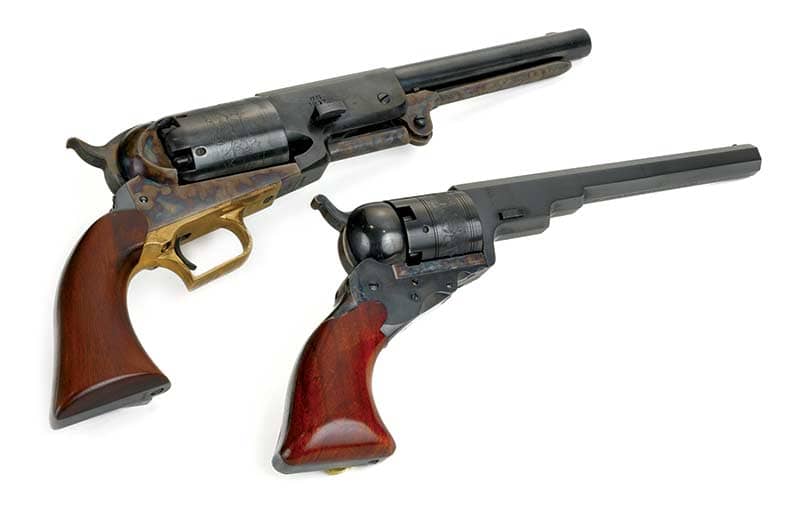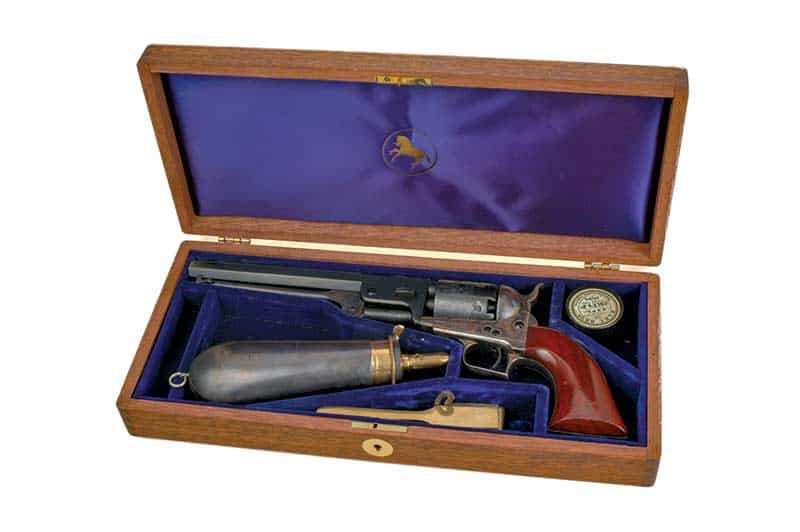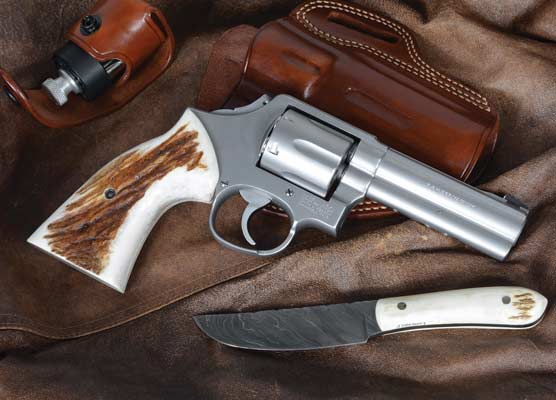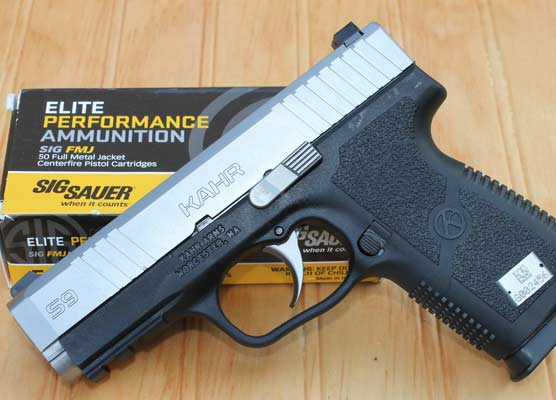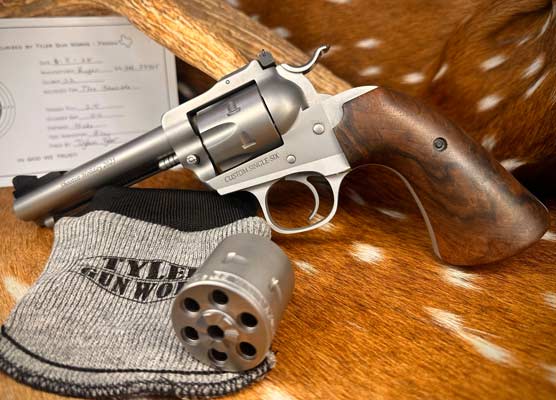Colt’s Cap & Ball Revolvers
Some of Sam Colt’s early efforts in creating workable revolvers seem like jokes today. Of course, they were loaded with either paper cartridges holding powder and bullets or loose powder and ball. Ignition was supplied by the relatively new percussion cap.
First was his semi-successful “Paterson,” which had a hidden trigger that didn’t “pop out” until the hammer was cocked. Most of those had to be disassembled for reloading, which was why big fighting knives were part of a ranger’s accouterments. He started making them in 1836, but his company soon failed. Somehow, a quantity of Patersons made it to the Texas Rangers, where in 1842, they were used in an encounter with Comanche warriors. The Indians rarely came out second best, but they did in that encounter.
By 1847, Mr. Colt was back in business with a U.S. Government contract for 1,000 sixguns. These beasts became known as the Walker/Colt .44, weighing 4½ lbs. with 9″ barrels. Thereafter followed a three-part sequence of Colt “Dragoons” where 7½” barrels and slightly shorter cylinders marginally made them smaller and lighter than Walkers. None of these first .44 revolvers could be passed off as “belt” carry. When issued to U.S. Army horse soldiers, they came with saddle-mounted holsters.
Carry Revolvers
Aside from the big .44s, Mr. Colt quickly recognized a need for a concealable revolver. That little five shooter appeared about 1848, was .31 caliber, weighed only 22 oz. with a 4″ barrel and came to be known as the “Baby Dragoon.” This pip-squeak had to be disassembled into three pieces for reloading. It was soon followed by the Model 1849, also a .31, but at least with a loading rammer mounted beneath its barrel.
Finally came a true “belt” pistol, the legendary and universally beloved (in its day) Model 1851 .36, which somehow gained the nickname “Navy,” with .36 becoming known as “Navy” caliber in regards to revolvers. Colt’s ’51 Navy quickly became the revolver by which all others were judged. It had a 7½” octagon barrel, a beautifully contoured grip frame still being copied today on single actions and weighed only 42 oz. Of course, Colt’s .51 Navy sixguns have become identified as Wild Bill Hickok’s favorites. He clung to them until his death in 1876, six years after metallic cartridge-firing revolvers hit the scene.
Production … And Grace
Now, let’s consider some numbers. Taking into account Colt’s Walkers, Dragoons, and Baby Dragoons, only about 36,300 were sold in all. That certainly wasn’t going to make Mr. Colt the fabulously wealthy man he was upon passing in 1862. No, that came about because of the Models 1849 and 1851. His factory produced 325,000 of the ’49s and 215,000 of the ’51s, with another 42,000 ’51s being produced in his short-lived London facility.
For almost a decade, the Colt Patent Firearms Company was at a plateau in revolver design because they were busy making those two prime money makers. However, someone at the Colt factory had a sense of aesthetics because in 1860 and 1861, Colt introduced two of the most graceful revolvers ever made. The ’60 was a .44, and the ’61 a .36. Both were based on the ’51 Navy frame. It was adapted to handle .44-sized projectiles by having a rebated cylinder: small at the base but enlarged at the front. Also, its grip frame was made 1/4″ longer. The timing of their introduction was also nigh on perfect as in 1861, the American Civil War broke out. The Federal Army was especially interested in the big .44, one reason Colt made 200,500 of them until production ceased in 1873. Only about 38,000 Model 1861s were made, but interestingly, the Model 1851 was so ensconced in America that Colt did not drop it upon unveiling the new Model 1861— both of those left Colt’s lineup in 1873.
Worthy of mention were two five shooters. Someone figured out the .31 was too small for self-defense, so they converted the Model 1849’s frame into Model 1862s. One version had the blocky design of the ’51 and the other the rounded grace of the ’61.
As for power, think of it this way in comparison to modern versus antique revolvers. The .31s were as .22 LRs are today. Stepping up .36s were as .38 Specials and .44s were as .44 Specials. By the way, except for the Model 1849 .31, I own Colt’s 2nd Generation reproductions of all those mentioned here and have fired them. My favorite? The Model 1861 .36.

